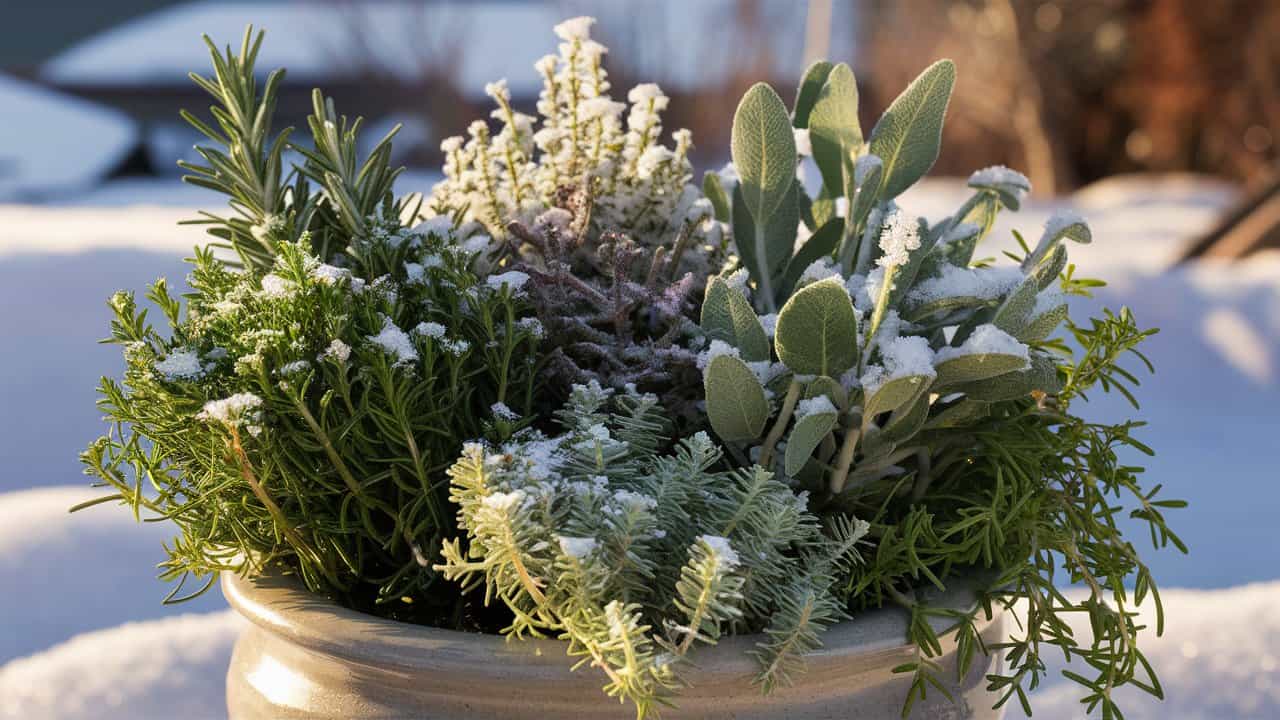Whether you’re an experienced gardener or a newcomer to the world of winter horticulture, this post will provide you with the knowledge and inspiration you need to cultivate a thriving, one-of-a-kind winter herb garden.
Chives

Chives are a versatile and hardy herb that thrive in the winter garden. These delicate, onion-flavored plants are easy to grow and can add a burst of flavor to a variety of dishes. Unlike their larger onion cousins, chives grow in dense, grassy clumps and produce delicate, purple-hued flowers in the spring.
One of the best things about chives is their resilience. These hardy plants can withstand cold temperatures and even light frosts, making them an ideal choice for the winter garden. Simply plant them in a sunny spot with well-draining soil, and they will continue to provide a steady supply of fresh, flavorful leaves throughout the colder months.
When it comes to using chives, the options are endless. Sprinkle them over baked potatoes, scrambled eggs, or salads for a pop of flavor. They also make a great addition to soups, sauces, and dips. For a unique twist, try infusing chives into butter or cream cheese for a delicious spread.
Tarragon

Tarragon is another winter-hardy herb that deserves a spot in the winter garden. This fragrant, licorice-like plant is a staple in French cuisine and can add a sophisticated touch to a variety of dishes.
Unlike chives, tarragon prefers a slightly warmer environment and may require a bit more protection from the elements. Consider planting it in a sheltered spot or even in a container that can be moved indoors during particularly cold snaps.
When it comes to using tarragon, a little goes a long way. The herb’s bold flavor can easily overpower other ingredients, so it’s best to use it sparingly. Try adding a few chopped leaves to roasted vegetables, chicken dishes, or even scrambled eggs for a unique twist. Tarragon also pairs beautifully with creamy sauces and dressings.
Sweet Cicely
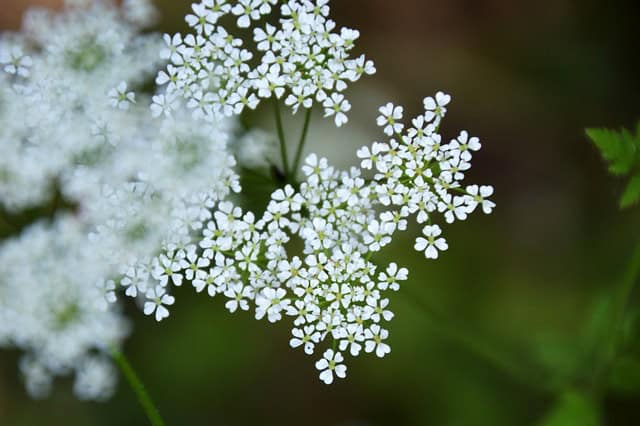
Sweet cicely is a lesser-known but equally delightful herb for the winter garden. This delicate, fern-like plant has a subtle, licorice-like flavor that can add a touch of sweetness to a variety of dishes.
One of the best things about sweet cicely is its versatility. The entire plant, from the leaves to the roots, is edible and can be used in a variety of ways. The leaves can be used fresh in salads or cooked into soups and stews, while the roots can be roasted or added to vegetable dishes.
Sweet cicely is also a great companion plant in the garden, as it can help to attract beneficial insects and pollinators. It’s a hardy plant that can withstand cold temperatures and even light frosts, making it an ideal choice for the winter garden.
When it comes to using sweet cicely, it’s important to remember that a little goes a long way. The herb’s licorice-like flavor can be overpowering if used in excess, so it’s best to start with small amounts and adjust to taste.
Rosemary
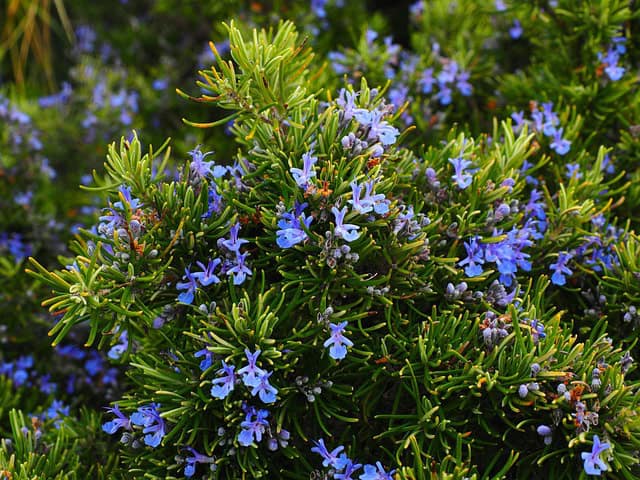
Rosemary is a true powerhouse in the winter garden. This hardy, evergreen herb not only thrives in cooler temperatures but also boasts a wealth of culinary and medicinal benefits. With its distinctive, pine-like aroma and flavor, rosemary is a must-have for any winter gardener.
One of the standout features of rosemary is its resilience. This plant can withstand frost, snow, and even light freezes, making it an ideal choice for the winter garden. In fact, rosemary often becomes even more fragrant and flavorful when exposed to colder weather, making it a valuable addition to a variety of winter dishes.
When it comes to using rosemary, the possibilities are endless. Sprinkle the fragrant leaves over roasted vegetables, meats, and potatoes for a burst of flavor. Rosemary also pairs beautifully with heartier winter herbs like thyme and sage, making it a natural choice for soups, stews, and braises. For a unique twist, try infusing rosemary into olive oil or vinegar for a versatile condiment.
Oregano

Oregano is another winter-hardy herb that deserves a spot in the winter garden. This robust, aromatic plant is a staple in Mediterranean cuisine and can add a depth of flavor to a variety of dishes.
Unlike some of its more delicate counterparts, oregano thrives in cooler temperatures and can even tolerate light frosts. This makes it an ideal choice for the winter garden, where it can continue to provide a steady supply of fresh leaves throughout the colder months.
When it comes to using oregano, the key is to use it judiciously. The herb’s bold, earthy flavor can easily overpower other ingredients, so it’s best to start with small amounts and adjust to taste. Sprinkle it over roasted vegetables, pizzas, or pasta dishes for a burst of flavor. Oregano also pairs beautifully with tomatoes, making it a natural choice for sauces and dips.
Roman Chamomile
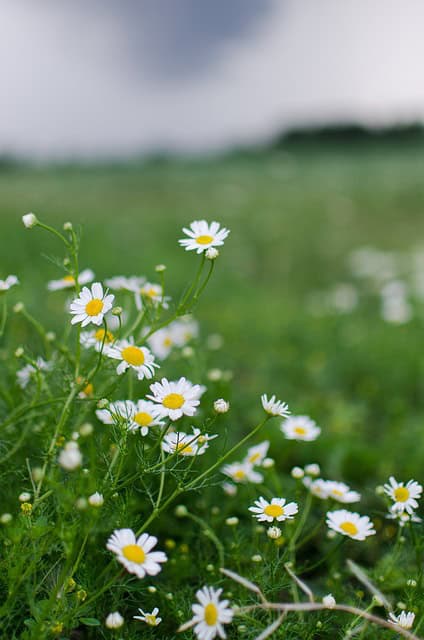
Roman chamomile is a lesser-known but equally delightful addition to the winter garden. This fragrant, low-growing herb is not only beautiful to look at, but it also boasts a wealth of medicinal and culinary benefits.
Unlike some of the more robust winter herbs, Roman chamomile prefers a slightly more sheltered environment. Consider planting it in a raised bed or container that can be moved indoors during particularly cold snaps.
When it comes to using Roman chamomile, the options are endless. The delicate, apple-like flowers can be dried and used to make a soothing, calming tea. The leaves can also be used fresh in salads or as a garnish for a variety of dishes. For a unique twist, try infusing Roman chamomile into butter or cream cheese for a delicious spread.
In addition to its culinary uses, Roman chamomile is also known for its medicinal properties. The herb has been used for centuries to soothe digestive issues, reduce inflammation, and promote relaxation. Consider incorporating it into your winter wellness routine for a natural boost of well-being.
Lavender
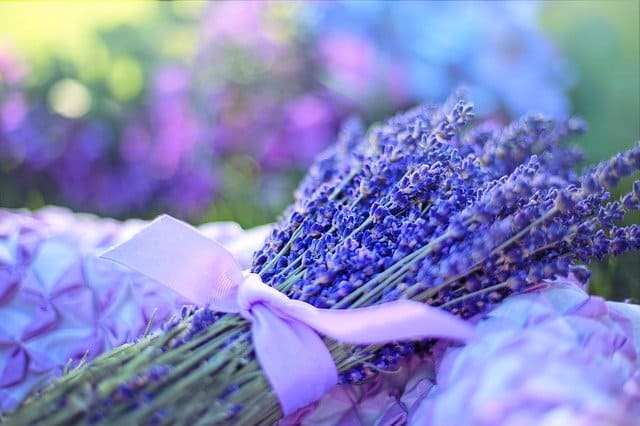
Lavender is a true showstopper in the winter garden. This fragrant, purple-hued herb not only adds a touch of beauty to the landscape but also boasts a wealth of practical applications. From its calming aroma to its versatile culinary uses, lavender is a must-have for any winter gardener.
One of the most remarkable things about lavender is its resilience. This hardy plant can withstand cold temperatures and even light frosts, making it an ideal choice for the winter garden. In fact, some varieties of lavender are even known to bloom during the colder months, providing a stunning visual contrast to the otherwise dormant landscape.
When it comes to using lavender, the options are truly endless. The fragrant flowers can be dried and used to make soothing teas, sachets, and even natural cleaning products. The leaves can also be used fresh in a variety of dishes, from salads and sauces to baked goods and cocktails. For a truly unique twist, try infusing lavender into honey or simple syrup for a versatile sweetener.
Lemon Balm
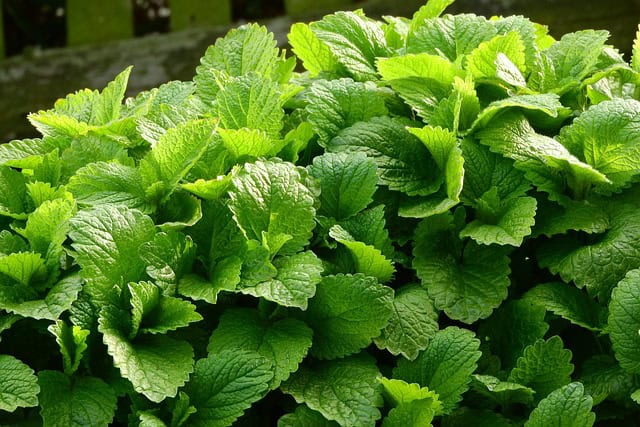
Lemon balm is another winter-hardy herb that deserves a spot in the winter garden. This bright, citrusy plant is not only a joy to grow but also boasts a wealth of culinary and medicinal benefits.
Unlike some of its more delicate counterparts, lemon balm is a resilient and adaptable plant that can thrive in a variety of growing conditions. It’s particularly well-suited to the winter garden, where its vibrant green leaves and delicate white flowers can add a touch of life to the otherwise dormant landscape.
When it comes to using lemon balm, the possibilities are endless. The fresh leaves can be used to add a bright, lemony flavor to a variety of dishes, from salads and soups to teas and cocktails. For a unique twist, try infusing lemon balm into vinegar or oil for a versatile condiment. Lemon balm is also known for its calming properties, making it a natural choice for herbal teas and tinctures.
Fennel
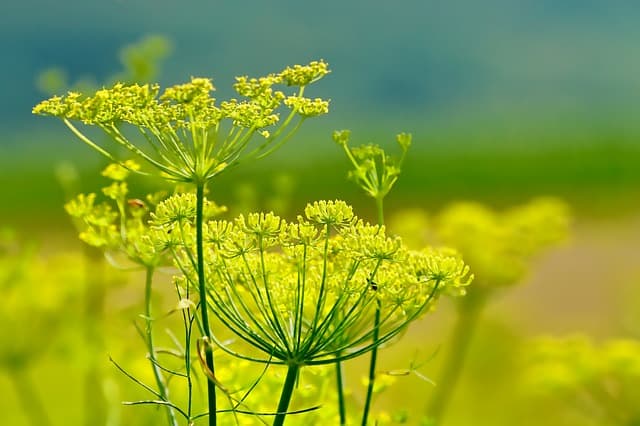
Fennel is a unique and versatile herb that deserves a place in the winter garden. This tall, feathery plant is not only visually striking but also boasts a wealth of culinary and medicinal benefits.
Unlike some of the more delicate winter herbs, fennel is a hardy and resilient plant that can withstand cold temperatures and even light frosts. In fact, some varieties of fennel are known to thrive in cooler climates, making them an ideal choice for the winter garden.
When it comes to using fennel, the entire plant is edible and can be used in a variety of ways. The bulb can be roasted, sautéed, or added to soups and stews for a burst of flavor. The fronds can be used fresh in salads or as a garnish for a variety of dishes. And the seeds can be used to add a warm, licorice-like flavor to baked goods, teas, and even cocktails.
In addition to its culinary uses, fennel is also known for its medicinal properties. The plant has been used for centuries to aid digestion, reduce inflammation, and even improve respiratory function. Consider incorporating fennel into your winter wellness routine for a natural boost of well-being.
Garlic Chives
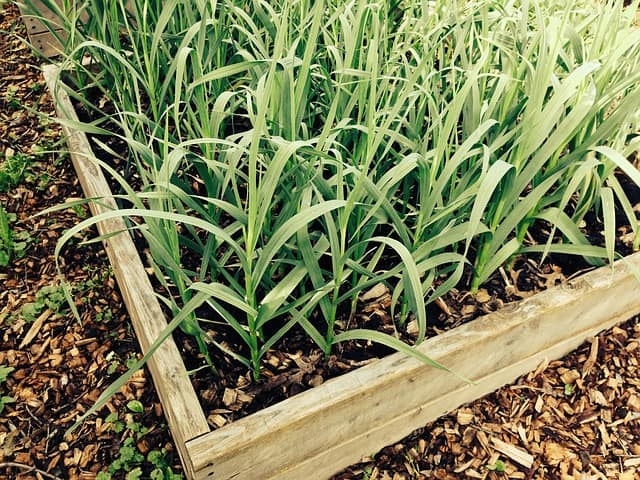
Garlic chives are a unique and flavorful addition to the winter garden. Unlike their milder counterparts, these hardy herbs pack a punch of garlicky goodness that can elevate a variety of dishes.
One of the standout features of garlic chives is their resilience. These plants can withstand cold temperatures and even light frosts, making them an ideal choice for the winter garden. In fact, garlic chives are known to thrive in cooler climates, where they can continue to provide a steady supply of fresh leaves throughout the colder months.
When it comes to using garlic chives, the options are truly endless. The flat, grass-like leaves can be used fresh in salads, soups, and stir-fries, or they can be dried and used as a seasoning in a variety of dishes. For a unique twist, try incorporating garlic chives into compound butters, dips, or even homemade bread.
Mint
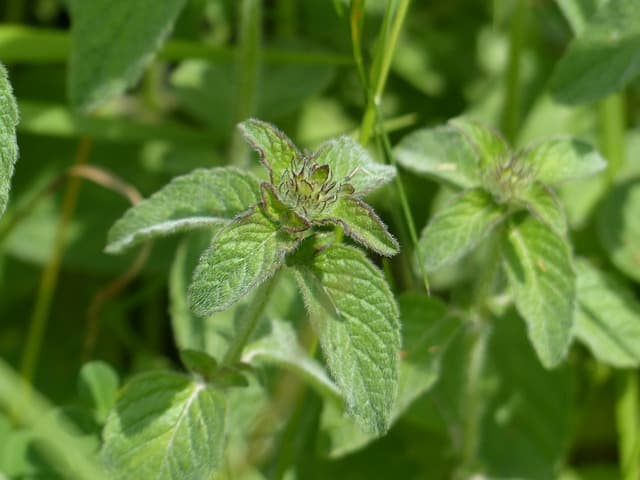
Mint is a versatile and hardy herb that thrives in the winter garden. With its refreshing, aromatic leaves and vibrant green hue, mint can add a touch of life to even the most dormant of landscapes.
One of the best things about mint is its resilience. This plant can withstand cold temperatures and even light frosts, making it an ideal choice for the winter garden. In fact, some varieties of mint are known to be evergreen, meaning they can continue to provide a steady supply of fresh leaves throughout the colder months.
When it comes to using mint, the possibilities are endless. The leaves can be used fresh in a variety of dishes, from salads and cocktails to teas and desserts. For a unique twist, try infusing mint into honey or simple syrup for a versatile sweetener. Mint is also known for its medicinal properties, making it a natural choice for herbal teas and tinctures.
Sorrel
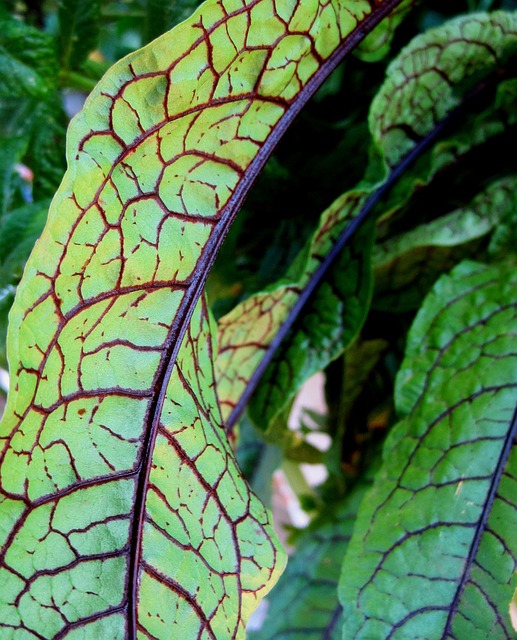
Sorrel is a unique and often overlooked herb that deserves a place in the winter garden. This tangy, lemony plant is not only a joy to grow but also boasts a wealth of culinary and nutritional benefits.
Unlike some of the more delicate winter herbs, sorrel is a hardy and resilient plant that can withstand cold temperatures and even light frosts. In fact, some varieties of sorrel are known to thrive in cooler climates, making them an ideal choice for the winter garden.
When it comes to using sorrel, the options are truly unique. The bright, tangy leaves can be used fresh in salads, soups, and sauces, adding a burst of flavor to a variety of dishes. For a more robust flavor, the leaves can also be cooked, which helps to mellow out their acidity.
In addition to its culinary uses, sorrel is also known for its nutritional benefits. The plant is rich in vitamins A and C, as well as a variety of minerals and antioxidants. Consider incorporating sorrel into your winter wellness routine for a natural boost of well-being.
Horseradish
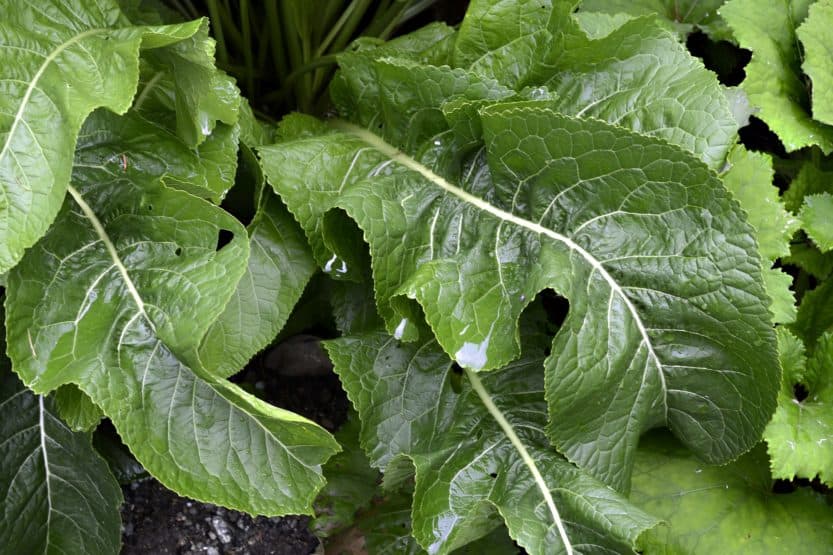
Horseradish is a unique and often overlooked winter garden herb that deserves a closer look. This pungent, root-based plant is not only a culinary powerhouse but also boasts a wealth of medicinal benefits.
One of the standout features of horseradish is its resilience. This hardy plant can withstand cold temperatures and even light frosts, making it an ideal choice for the winter garden. In fact, horseradish is known to thrive in cooler climates, where it can continue to provide a steady supply of fresh, flavorful roots throughout the colder months.
When it comes to using horseradish, the options are truly endless. The roots can be grated and used to add a bold, spicy kick to a variety of dishes, from roasted meats and vegetables to sauces and dips. For a unique twist, try incorporating horseradish into homemade mustards or relishes. Horseradish is also known for its medicinal properties, with some studies suggesting it may have anti-inflammatory and antimicrobial benefits.
Thyme
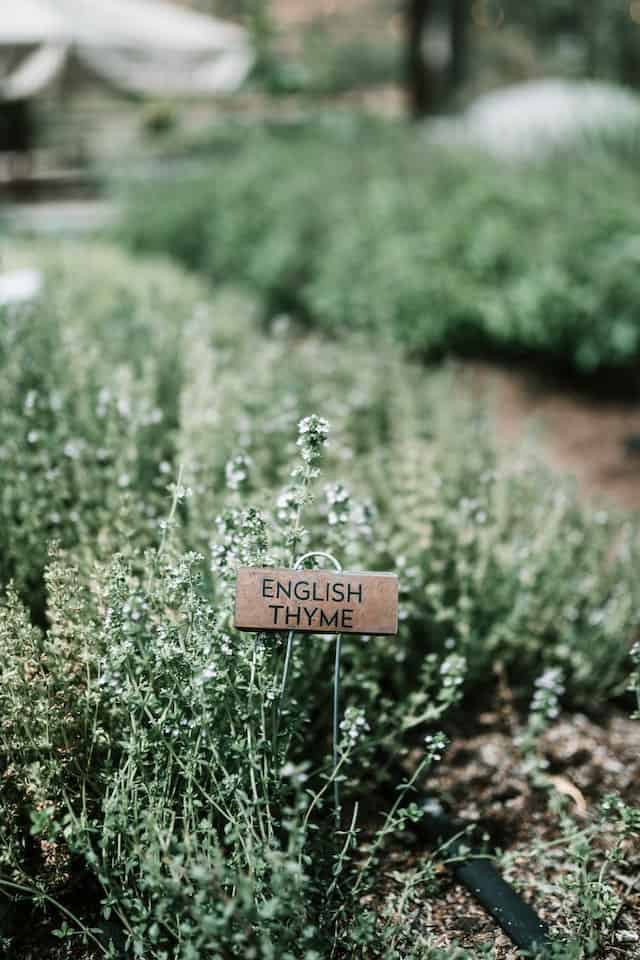
Thyme is a versatile and hardy winter garden herb that deserves a spot in every gardener’s arsenal. This fragrant, evergreen plant not only adds a touch of flavor to a variety of dishes but also boasts a wealth of practical applications.
One of the most remarkable things about thyme is its resilience. This plant can withstand cold temperatures and even light frosts, making it an ideal choice for the winter garden. In fact, some varieties of thyme are known to be evergreen, meaning they can continue to provide a steady supply of fresh leaves throughout the colder months.
When it comes to using thyme, the options are truly endless. The fragrant leaves can be used fresh in a variety of dishes, from soups and stews to roasted meats and vegetables. For a unique twist, try infusing thyme into olive oil or vinegar for a versatile condiment. Thyme is also known for its medicinal properties, with some studies suggesting it may have antimicrobial and antioxidant benefits.
Winter Savory
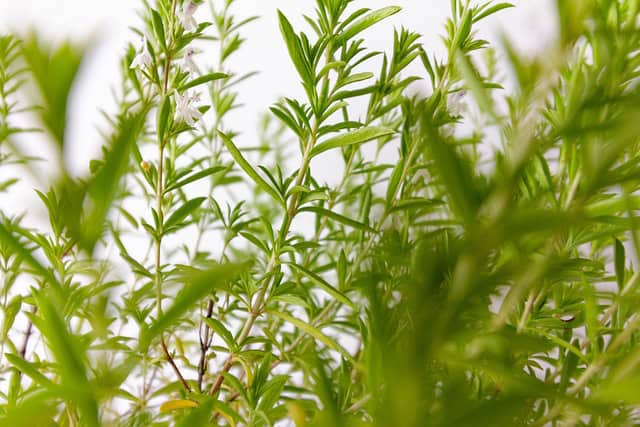
Winter savory is a unique and often overlooked herb that deserves a place in the winter garden. This hardy, evergreen plant not only adds a touch of flavor to a variety of dishes but also boasts a wealth of practical applications.
Unlike some of its more delicate counterparts, winter savory is a resilient and adaptable plant that can thrive in a variety of growing conditions. It’s particularly well-suited to the winter garden, where its aromatic leaves and small, white flowers can add a touch of life to the otherwise dormant landscape.
When it comes to using winter savory, the possibilities are truly endless. The peppery, slightly minty leaves can be used fresh in a variety of dishes, from soups and stews to roasted meats and vegetables. For a unique twist, try incorporating winter savory into homemade bread or biscuits for a savory twist. Winter savory is also known for its medicinal properties, with some studies suggesting it may have antimicrobial and anti-inflammatory benefits.
Sage
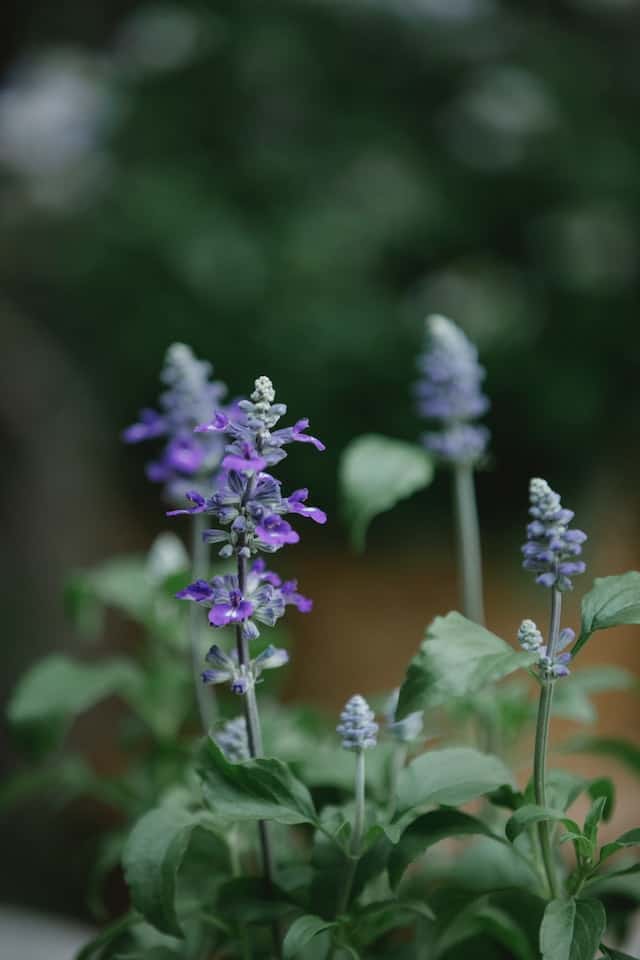
Sage is a versatile and hardy herb that deserves a prominent place in the winter garden. This fragrant, silvery-green plant not only adds a touch of flavor to a variety of dishes but also boasts a wealth of practical applications.
One of the most remarkable things about sage is its resilience. This plant can withstand cold temperatures and even light frosts, making it an ideal choice for the winter garden. In fact, some varieties of sage are known to be evergreen, meaning they can continue to provide a steady supply of fresh leaves throughout the colder months.
When it comes to using sage, the options are truly endless. The aromatic leaves can be used fresh or dried in a variety of dishes, from roasted meats and vegetables to soups and stews. For a unique twist, try infusing sage into olive oil or butter for a flavorful cooking medium. Sage is also known for its medicinal properties, with some studies suggesting it may have anti-inflammatory and antimicrobial benefits.
Feverfew
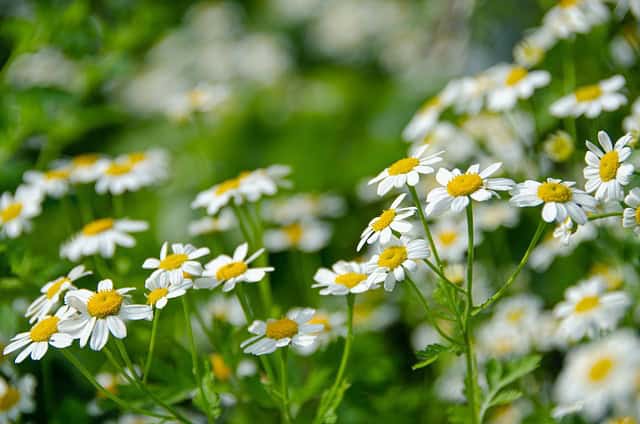
Feverfew is a unique and often overlooked herb that deserves a spot in the winter garden. This hardy, daisy-like plant not only adds a touch of visual interest to the landscape but also boasts a wealth of medicinal benefits.
Unlike some of the more delicate winter herbs, feverfew is a resilient and adaptable plant that can thrive in a variety of growing conditions. It’s particularly well-suited to the winter garden, where its bright, white flowers and finely-divided leaves can add a touch of life to the otherwise dormant landscape.
When it comes to using feverfew, the options are primarily medicinal. The leaves and flowers of the plant have been used for centuries to treat a variety of ailments, including migraines, arthritis, and even fever (hence the name “feverfew”). Some studies have even suggested that feverfew may have anti-inflammatory and analgesic properties, making it a natural choice for those seeking a holistic approach to pain management.
Catmint
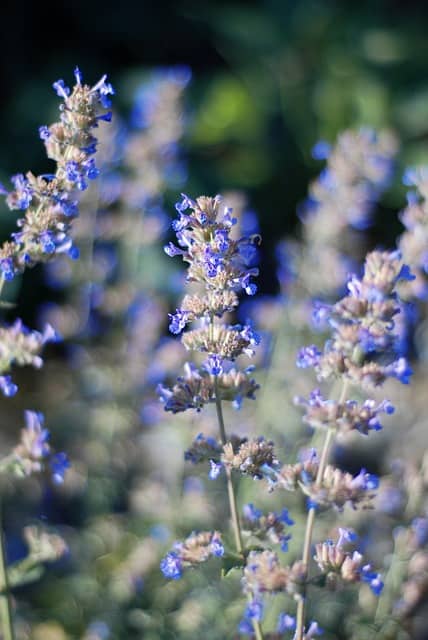
Catmint is a unique and often overlooked herb that deserves a place in the winter garden. This hardy, aromatic plant not only adds a touch of visual interest to the landscape but also boasts a wealth of practical applications.
One of the standout features of catmint is its resilience. This plant can withstand cold temperatures and even light frosts, making it an ideal choice for the winter garden. In fact, some varieties of catmint are known to be evergreen, meaning they can continue to provide a steady supply of fresh leaves throughout the colder months.
When it comes to using catmint, the options are truly diverse. The fragrant leaves can be used fresh in a variety of dishes, from salads and teas to sauces and marinades. For a unique twist, try infusing catmint into vinegar or honey for a versatile condiment. Catmint is also known for its medicinal properties, with some studies suggesting it may have calming and anti-anxiety effects.
Of course, one of the most well-known uses of catmint is its effect on cats. This herb is known to have a catnip-like effect on felines, making it a popular choice for cat owners looking to provide their furry friends with a natural source of entertainment and enrichment.
Anise Hyssop
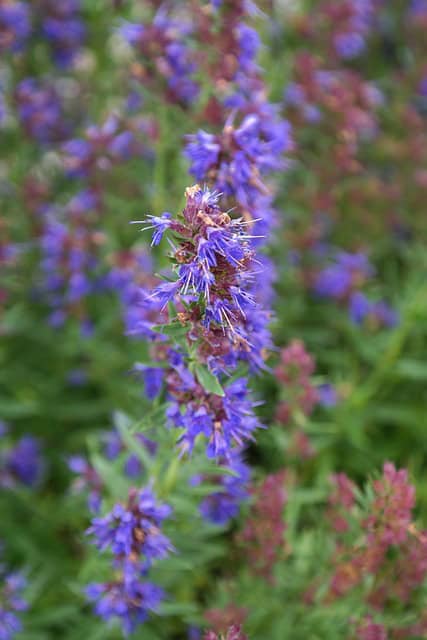
Anise hyssop is a unique and often overlooked herb that deserves a place in the winter garden. This fragrant, licorice-scented plant not only adds a touch of visual interest to the landscape but also boasts a wealth of culinary and medicinal benefits.
One of the standout features of anise hyssop is its resilience. This hardy plant can withstand cold temperatures and even light frosts, making it an ideal choice for the winter garden. In fact, some varieties of anise hyssop are known to be perennial, meaning they can continue to provide a steady supply of fresh leaves and flowers year after year.
When it comes to using anise hyssop, the options are truly diverse. The fragrant leaves and flowers can be used fresh in a variety of dishes, from salads and teas to baked goods and cocktails. For a unique twist, try infusing anise hyssop into honey or simple syrup for a versatile sweetener. Anise hyssop is also known for its medicinal properties, with some studies suggesting it may have anti-inflammatory and antimicrobial benefits.
Lovage

Lovage is a unique and often overlooked herb that deserves a spot in the winter garden. This hardy, celery-like plant not only adds a touch of flavor to a variety of dishes but also boasts a wealth of practical applications.
One of the most remarkable things about lovage is its resilience. This plant can withstand cold temperatures and even light frosts, making it an ideal choice for the winter garden. In fact, some varieties of lovage are known to be evergreen, meaning they can continue to provide a steady supply of fresh leaves throughout the colder months.
When it comes to using lovage, the options are truly endless. The aromatic leaves and stems can be used fresh or dried in a variety of dishes, from soups and stews to roasted meats and vegetables. For a unique twist, try incorporating lovage into homemade bread or crackers for a savory twist. Lovage is also known for its medicinal properties, with some studies suggesting it may have diuretic and anti-inflammatory benefits.
Mountain Mint
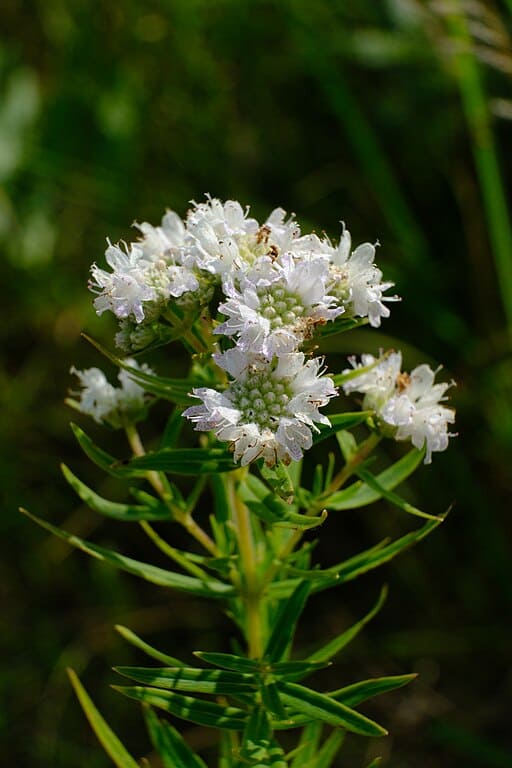
Mountain mint is a unique and often overlooked herb that deserves a place in the winter garden. This hardy, aromatic plant not only adds a touch of visual interest to the landscape but also boasts a wealth of practical applications.
Unlike some of the more delicate winter herbs, mountain mint is a resilient and adaptable plant that can thrive in a variety of growing conditions. It’s particularly well-suited to the winter garden, where its fragrant leaves and small, white flowers can add a touch of life to the otherwise dormant landscape.
When it comes to using mountain mint, the options are truly diverse. The fragrant leaves can be used fresh in a variety of dishes, from salads and teas to sauces and marinades. For a unique twist, try infusing mountain mint into vinegar or honey for a versatile condiment. Mountain mint is also known for its medicinal properties, with some studies suggesting it may have antimicrobial and insect-repelling benefits.
One of the most interesting things about mountain mint is its ability to attract a variety of pollinators, including bees, butterflies, and hummingbirds. This makes it an excellent choice for gardeners looking to support local wildlife and promote a healthy, thriving ecosystem.
Catnip
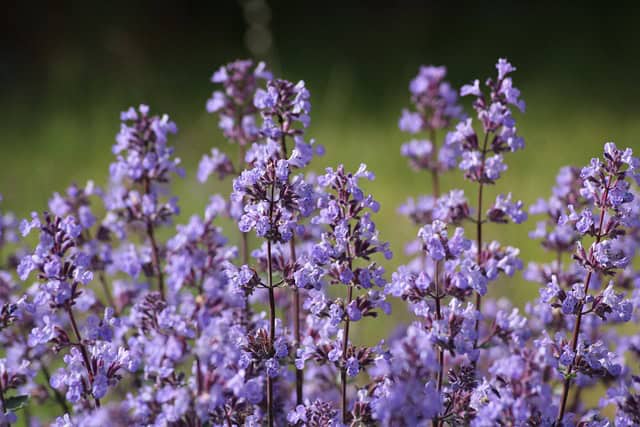
Catnip is a unique and often misunderstood herb that deserves a place in the winter garden. This hardy, aromatic plant not only provides endless entertainment for our feline friends but also boasts a wealth of practical applications.
Unlike some of the more delicate winter herbs, catnip is a resilient and adaptable plant that can thrive in a variety of growing conditions. It’s particularly well-suited to the winter garden, where its distinctive, heart-shaped leaves and small, purple flowers can add a touch of whimsy to the otherwise dormant landscape.
When it comes to using catnip, the options are primarily focused on its effect on cats. The active compound in catnip, nepetalactone, triggers a response in felines that can result in playful, euphoric behavior. This makes catnip a popular choice for cat owners looking to provide their furry friends with a natural source of enrichment and entertainment.
However, catnip is not just for cats. The leaves and flowers of the plant can also be used to create a variety of herbal teas and tinctures, which are said to have a calming effect on humans. Some studies have even suggested that catnip may have mild sedative and analgesic properties, making it a potential natural remedy for anxiety and pain.
Wild Bergamot
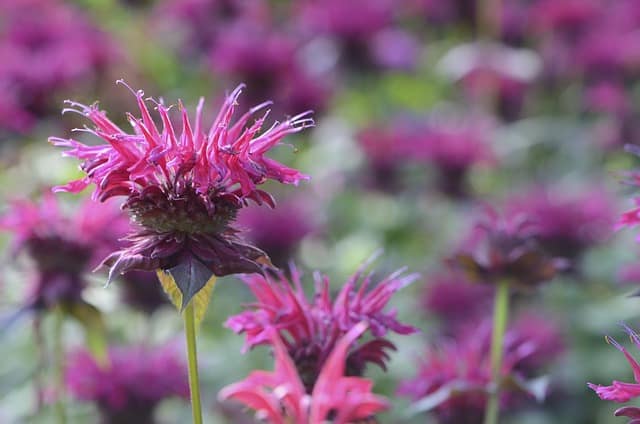
Wild bergamot is a unique and often overlooked herb that deserves a spot in the winter garden. This hardy, aromatic plant not only adds a touch of visual interest to the landscape but also boasts a wealth of culinary and medicinal benefits.
One of the standout features of wild bergamot is its resilience. This plant can withstand cold temperatures and even light frosts, making it an ideal choice for the winter garden. In fact, some varieties of wild bergamot are known to be perennial, meaning they can continue to provide a steady supply of fresh leaves and flowers year after year.
When it comes to using wild bergamot, the options are truly diverse. The fragrant leaves and flowers can be used fresh or dried in a variety of dishes, from teas and infusions to sauces and marinades. For a unique twist, try incorporating wild bergamot into homemade baked goods or cocktails. Wild bergamot is also known for its medicinal properties, with some studies suggesting it may have antimicrobial and antioxidant benefits.
Echinacea
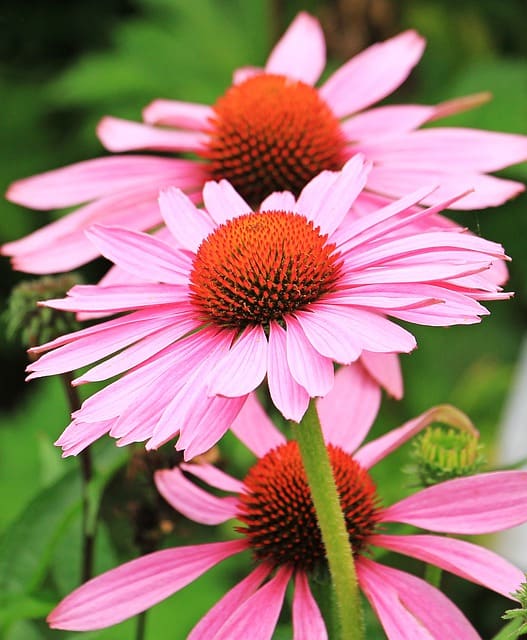
Echinacea is a unique and often overlooked herb that deserves a place in the winter garden. This hardy, purple-hued plant not only adds a touch of visual interest to the landscape but also boasts a wealth of medicinal benefits.
Unlike some of the more delicate winter herbs, echinacea is a resilient and adaptable plant that can thrive in a variety of growing conditions. It’s particularly well-suited to the winter garden, where its distinctive, daisy-like flowers and spiky, green leaves can add a touch of life to the otherwise dormant landscape.
When it comes to using echinacea, the options are primarily medicinal. The roots, leaves, and flowers of the plant have been used for centuries to support the immune system and help the body fight off infections. Some studies have even suggested that echinacea may have anti-inflammatory and antiviral properties, making it a natural choice for those seeking a holistic approach to health and wellness.
One of the most interesting things about echinacea is its ability to attract a variety of pollinators, including bees, butterflies, and hummingbirds. This makes it an excellent choice for gardeners looking to support local wildlife and promote a healthy, thriving ecosystem.
Hops
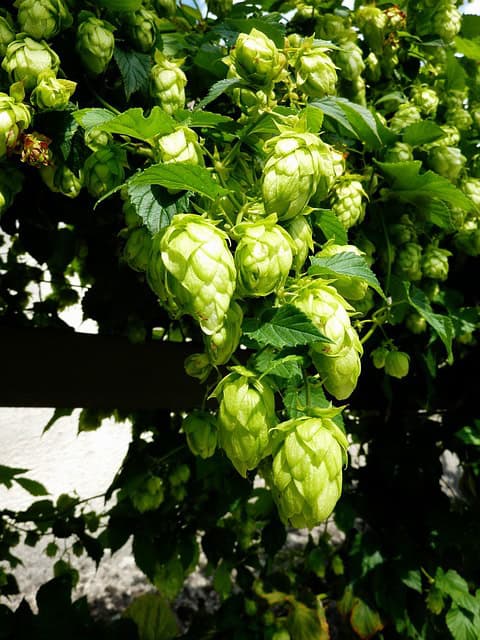
Hops may not be the first herb that comes to mind when planning a winter garden, but this versatile and hardy plant deserves a closer look. Known primarily for its use in the brewing of beer, hops are also a valuable addition to the winter garden, offering both practical and aesthetic benefits.
One of the most remarkable things about hops is their ability to thrive in cold weather. This climbing vine can withstand freezing temperatures and even snow, making it a resilient choice for the winter garden. In fact, some varieties of hops are known to be perennial, meaning they can continue to provide a steady supply of fresh cones year after year.
Beyond their hardiness, hops also offer a unique visual appeal to the winter garden. As the vines climb and twine around their supports, they create a striking, architectural element that can add depth and texture to the landscape. The distinctive, cone-shaped flowers, known as “hops,” also provide a pop of color and interest during the colder months.
But hops aren’t just for show – they also have a wealth of practical applications. In addition to their well-known use in brewing, the leaves and cones of the hops plant can be used to create a variety of herbal teas, tinctures, and even natural insect repellents. Some studies have even suggested that hops may have anti-inflammatory and sedative properties, making them a potential natural remedy for a variety of ailments.
Winter Garden Herbs FAQ
Q: What are the best herbs to grow in a winter garden?
A: Some of the best herbs for a winter garden include sage, feverfew, catmint, anise hyssop, lovage, mountain mint, catnip, wild bergamot, echinacea, and hops. These hardy plants can withstand cold temperatures and even light frosts, providing a steady supply of fresh leaves, flowers, and cones throughout the colder months.
Q: How do I care for my winter garden herbs?
A: Caring for winter garden herbs is relatively straightforward. Most of these plants prefer well-drained soil and full to partial sun exposure. Be sure to water them regularly, especially during dry spells, and consider mulching around the base of the plants to help retain moisture. Pruning and deadheading can also help keep your herbs looking their best.
Q: Can I use these herbs for culinary or medicinal purposes?
A: Absolutely! Many of the herbs featured in this blog post have a wealth of culinary and medicinal applications. From adding flavor to dishes to creating natural remedies, these versatile plants offer a range of practical uses. Just be sure to research the specific properties and uses of each herb before incorporating them into your cooking or wellness routine.
Conclusion
The winter garden is a unique and often overlooked opportunity to cultivate a diverse array of hardy herbs. From the aromatic sage and the medicinal feverfew to the whimsical catnip and the resilient hops, these plants offer a wealth of practical and aesthetic benefits that can enrich both your garden and your life.
By incorporating these winter garden herbs into your landscape, you can not only enjoy their visual appeal but also reap the rewards of their culinary and medicinal properties. Whether you’re looking to add a touch of flavor to your meals or seeking natural remedies for common ailments, these versatile plants have something to offer.
So why not embrace the colder months and explore the wonders of the winter garden? With a little planning and care, you can create a thriving oasis of herbs that will delight your senses and nourish your body all season long.


